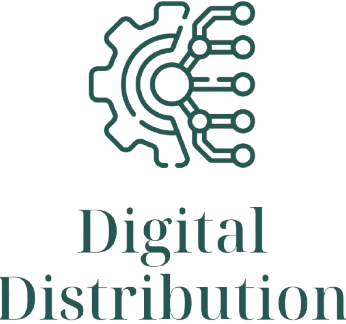In the highly competitive ETF market, content marketing is more than just a buzzword—it’s a vital strategy for connecting with investors, building trust, and standing out from the crowd. Whether your audience is retail investors exploring ETFs for the first time or institutional investors seeking sophisticated strategies, compelling, educational, and entertaining content can drive engagement and, ultimately, inflows.
This guide outlines how ETF issuers can craft a content marketing strategy that resonates with both retail and institutional audiences.
Why Content Marketing is Essential for ETF Issuers
1. Educating Investors
ETFs often involve nuanced investment strategies, from passive indexing to active management and factor investing. Thoughtful content helps demystify these products, empowering investors to make informed decisions.
2. Building Credibility
Investors trust providers who demonstrate expertise. High-quality content showcases your authority in financial markets and establishes your brand as a trusted partner.
3. Driving Organic Traffic
Content marketing plays a pivotal role in boosting search engine optimization (SEO), increasing your visibility to potential investors.
4. Expanding Your Audience
With retail investors driving ETF growth and institutions seeking advanced solutions, tailored content ensures you connect with both audiences effectively.
Step-by-Step Guide to Effective Content Marketing for ETFs
1. Define Your Target Audience
• Retail Investors: Focus on simplicity and practical applications, like cost savings, tax efficiency, and how ETFs fit into everyday portfolios.
• Institutional Investors: Highlight advanced analytics, performance metrics, and in-depth strategy breakdowns.
2. Set Clear Objectives
Define what success looks like for your content efforts. Common goals include:
• Increasing website traffic.
• Generating leads for specific ETFs.
• Enhancing brand awareness.
• Educating existing investors to improve retention.
3. Choose the Right Content Formats
Diversifying content formats ensures you cater to different learning styles and preferences:
• Blog Posts: Explain ETF concepts, trends, or strategies. Examples: “What Are Thematic ETFs?” or “How Factor Investing Can Enhance Your Portfolio.”
• Whitepapers and Reports: Provide in-depth analysis for institutional audiences.
• Videos: Short explainers or interviews with portfolio managers resonate with both audiences.
• Infographics: Simplify complex data, like historical performance or expense ratio comparisons.
• Podcasts: Discuss market trends or conduct interviews with experts to position your brand as a thought leader.
4. Focus on Educational Value
Investors value actionable insights over direct sales pitches. Create content that:
• Explains key financial concepts, like diversification or expense ratios.
• Shows how your ETFs fit into broader market trends (e.g., “ETFs for the AI Revolution”).
• Answers common questions, like “What’s the Difference Between ETFs and Mutual Funds?”
5. Embrace Storytelling
Data is essential, but stories drive emotional connections. Share success stories, market insights, or the inspiration behind your ETF offerings. For instance, a sustainable investing ETF might tell the story of how it contributes to environmental goals.
6. Use Data to Build Authority
Back your content with credible data. For institutional audiences, include:
• Historical performance metrics.
• Backtesting results for smart beta or factor-based ETFs.
• Peer comparisons to demonstrate value.
Retail investors may prefer simple graphs or visuals summarizing data trends.
7. Optimize for SEO
• Keyword Strategy: Use tools like Google Keyword Planner to find terms like “low-cost ETFs” or “dividend growth ETFs.”
• Meta Descriptions: Write compelling meta descriptions to improve click-through rates.
• Internal Linking: Link to related content on your website to keep readers engaged.
8. Leverage Social Media Channels
Social platforms are key for reaching retail and institutional audiences:
• LinkedIn: Share detailed market insights and whitepapers for institutional investors.
• Twitter: Provide bite-sized market updates and links to educational blogs.
• YouTube: Post video content, such as “ETF Investing 101” or live Q&A sessions.
9. Engage with Your Audience
Content is a two-way street. Respond to comments, questions, or feedback promptly to build a stronger connection with your audience.
10. Track and Adjust Performance
Use analytics tools to measure performance:
• Track traffic, engagement, and conversions.
• Identify which topics or formats resonate most.
• Adjust your strategy based on these insights.
Tailoring Content for Retail vs. Institutional Audiences
Retail Investors
• Use simple language and avoid jargon.
• Focus on relatable topics like retirement planning or saving for college.
• Highlight benefits like cost efficiency, flexibility, and tax advantages.
Institutional Investors
• Dive deeper into data-driven analysis and strategy details.
• Provide tools like model portfolios or backtesting frameworks.
• Emphasize regulatory compliance and portfolio integration.
Examples of Winning Content
1. Case Study: BlackRock’s iShares Blog
BlackRock’s iShares blog consistently delivers educational content that demystifies ETFs, explains market trends, and provides actionable investment strategies.
2. Vanguard’s Video Series
Vanguard uses short, engaging videos to explain ETF basics to retail investors while offering in-depth webinars for advisors and institutions.
3. Thematic Campaigns
ETF providers like Global X have excelled with thematic investing guides, connecting their offerings to megatrends like renewable energy or artificial intelligence.
Final Thoughts
Content marketing is not a one-size-fits-all approach. For ETF issuers, the key is crafting tailored, high-quality content that educates, entertains, and builds trust. By combining storytelling, data-driven insights, and digital marketing best practices, you can position your brand as a leader in the competitive ETF market.
Start creating content today that resonates with your audience—and watch your engagement, credibility, and AUM grow.




